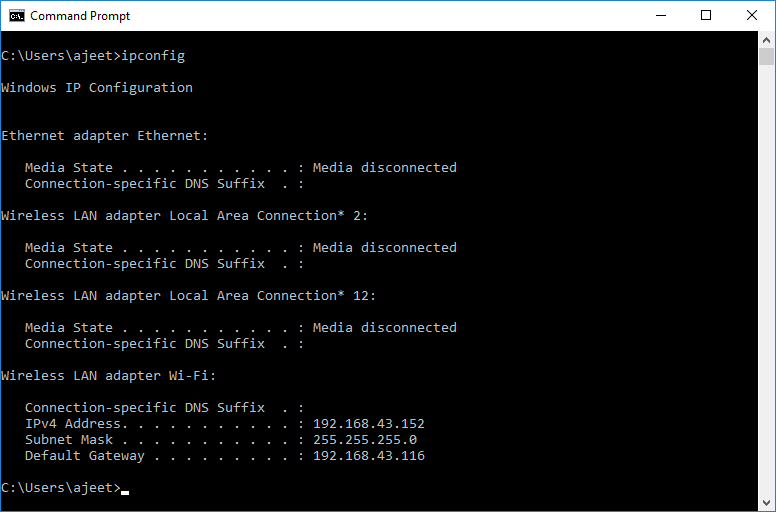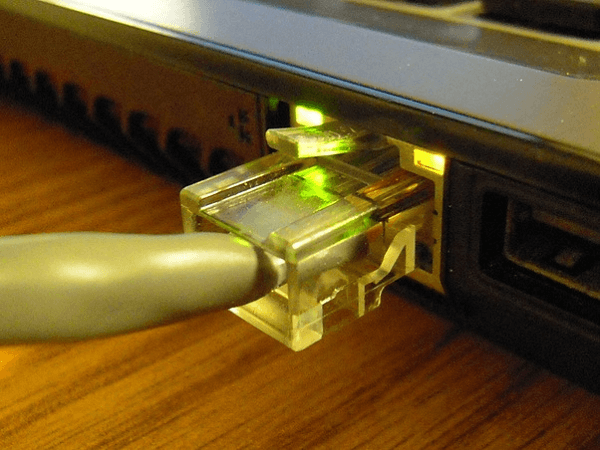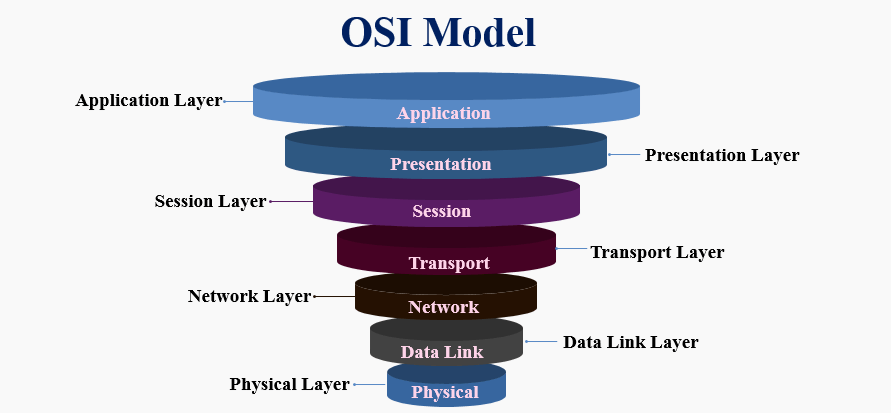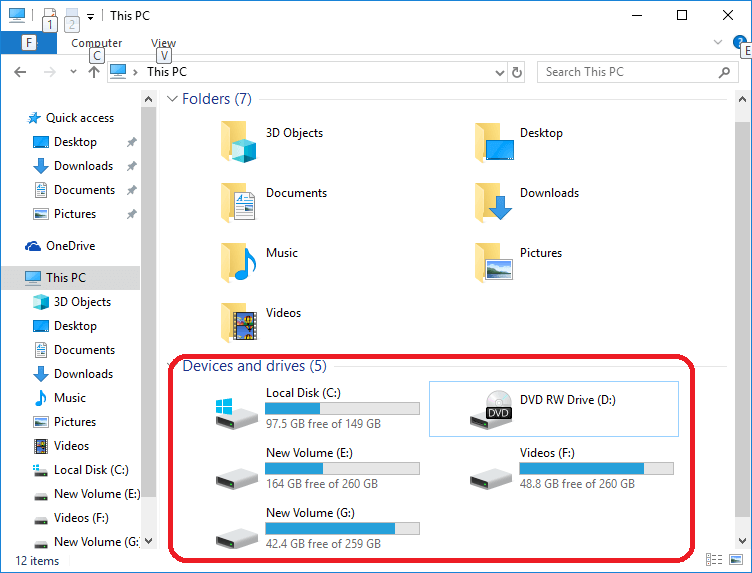Most Asked Technical Support Interview QuestionsFollowing is a list of most frequently asked technical support interview questions and their best possible answers. 1) What do you think about the role of a technical support engineer?The job role of a technical support engineer is to maintain and monitor the computers and the networks of an organization or provide online support for the organization's clients. A technical support engineer is responsible for doing the following tasks:
2) Why are you interested in Technical Support?The interviewer asks this question to check your passion for the job. Your answer must be sincere and honest, and you have a great understanding of this job profile and its purpose. A Sample Answer: Sir, I have always been fascinated by technology, and I enjoy working with people. It's my hobby to solve the customers' issues, and I enjoy troubleshooting other's issues. 3) What are some of the latest computer processors?Following is a list of some latest computer processors:
4) What is Windows Recovery Environment? How can you access it?Windows Recovery Environment or Windows RE is a recovery environment. It is used to repair common causes of unbootable operating systems. Windows Recovery Environment (Windows RE) is based on Windows Pre-installation Environment (Windows PE). You can easily customize it with additional drivers, languages, Windows PE Optional Components, and other troubleshooting and diagnostic tools. By default, Windows RE is preloaded into the Windows 8.1, Windows 10, and Windows Server 2012 R2 installations. We can easily access the Windows RE features through the Boot Options menu by using any of the following steps:
5) What does the sign question mark '?' indicates in the device manager?When the sign question mark "?" appears in the device manager, it indicates that it is not properly installed. We can see this problem mainly in brand new plug-in cards. 6) What is your way to troubleshoot an issue?The interviewer asks this question to check your approach towards identifying a problem and finding its solution. It also shows your attitude towards problem-solving. Remember that the first thing in troubleshooting is to get all the facts first. While answering this question, you must focus on the following things:
You can answer this question in the following way: A Sample Answer: Sir, the first thing I do is listen to my client carefully to identify the problem. Then, I go through all the necessary steps for rectifying that problem. Now, I create a detailed and accurate troubleshooting plan that must be extensive and adaptable for the client. 7) How would you deal with a customer who complains about a brand new printer and system for not getting a good print copy?If you have any technical support experience, you may have faced this type of problem. You can cope up with the client in the following way: A Sample Answer: Sir, I will first ask the customer whether he has properly connected his system with the printer. Then, I would ask him to check the Device Driver. In most cases, if you install an incorrect Device Driver, the print copy would not be clear. If this not solves the client's issue, I would diagnose some other cases or transfer this case further to my seniors. 8) How do you keep yourself updated with the current technology?The interviewer asks this question to check your interest in the latest trends and technologies. You can answer this question in the following way: Sir, I follow some technology tabloids regularly and also keep me connected with social networking sites. On these platforms, I can see the technological advancement news easily. I also keep surfing the latest technology on the internet. 9) What do you understand by Ping?Ping is used to checking the connectivity with the IP address. It is a computer network administration software utility that is used to test the reach of a host on an Internet Protocol network. It is available for virtually all operating systems with networking capability, including most embedded network administration software. 10) What is an IP Address? What is its usage?An IP address is a unique numerical address identifier of every device connected to a computer network. An IP address looks like this: 216.27.61.141. It gives a unique identity to a network. 11) How can you detect a computer's IP address?We can easily detect a computer's IP Address by following the steps given below:

12) Which are the essential things in identifying the problems and solving them in tech support?Manuals, Knowledge, team members, and experience are some crucial things that would be helpful to troubleshoot the problem and solving them. 13) What is a Data Cable? Why is it used?A Data Cable is a thin plastic band-like cable used to connect the Data-Devices such as Hard-disk drives (HDD), Floppy Disk Drives, CD/DVD-ROM drives with the motherboard. Data Cables are mainly used for data transfer. 14) What is a Microprocessor? What is its use?A microprocessor is a program-controlled device used to retrieve the data instructions from memory and decodes them. After solving the instructions, it executes them for further process. 15) What is the disadvantage of microprocessors?The most significant disadvantage of a microprocessor is the limitation on the size of the data. It also does not support floating-point operations. 16) Why 8085 microprocessor is called an 8-bit processor?8085 microprocessor is called an 8-bit processor because it has an 8 bit ALU (Arithmetic Logic Unit). 17) What do lights indicate on a Modem / LAN Card?Generally, there are 04 lights on a Modem / LAN Card that indicates the following thing: 
18) What is an average call period while dealing with the customers?Generally, the expected period of an average call would be around 2-3 minutes. Sometimes, it would be less or more depending on the complexity of the problem. 19) What are the different hardware components of a desktop computer or laptop?The interviewer asks this question to test your basic knowledge of computers. Main hardware components for desktop and laptop computers are the motherboard, processor, RAM, monitor, mouse, soundcard, keyboard, graphics, hard disk drive, power supply, floppy disk drive, etc. 20) What do you understand by stack? Can we use ROM as a stack?Stack is a part of RAM used to save the content of the program counter and general-purpose registers. We cannot use ROM as a stack because it is not possible to write on ROM. 21) What do you understand by Hard-Disk Partitions?Hard-Disk Partition is a type of partition used to divide a Hard-disk drive into smaller segments as required by the user. It is done for better management of the space in it. 22) What is the use of Latch?Latch is a temporary storage device controlled by a timing signal. It can only store 0 or 1. It is a D-type flip-flop storage device. 23) What do you understand by DHCP?DHCP is an acronym that stands for Dynamic Host Configuration Protocol. It is a network protocol that is used to enable the server to assign an IP address to a computer automatically. 24) What do you understand by the OSI model?OSI is an acronym that stands for Open System Interconnection. The OSI model is a conceptual model or a standard description, or a reference model that characterizes a telecommunication or computing system's communication functions. It specifies how a message should be conveyed between any two points within a telecommunication network. The OSI model comprises several layers, and each layer provides services to its above layer. This model was developed by ISO 'International Organization of Standardization' in the year 1984. 25) What are the seven different layers of the OSI model? Explain its architecture in detail.The OSI model's architecture consists of the seven layers that work collaboratively to transmit the data from one person to another across the globe. 
Following is the list of all seven layers of the OSI model:
26) What do you understand by TCP/IP? What does it do?TCP/IP stands for Transmission Control Protocol or Internet protocol. It is a suite of communication protocols used to interconnect network devices on the internet. We can say that it is used to connect hosts on the internet by transferring data over the network. It can also be used as a communications protocol in a private computer network, an intranet, or an extranet. 27) How would you resolve this issue if audio is not working or there is no sound from your computer?We should follow the steps given below to resolve the "audio is not working or there is no sound from your computer" issue:
28) What are the usages of RJ45 and RJ11 connectors?The RJ45 connectors are used for LAN/internet connections, while RJ11 connectors are used for Table cable connections. 29) What do you understand by Cache memory? What is the advantage of a processor having more cache memory?Cache memory is a high-speed memory type that acts as a buffer between RAM and the CPU. The cache memory holds the requested data and instructions to make it immediately available to the CPU when required. It is also used to reduce the average time to access data from the Main memory. When the cache memory increases, the speed of the system will also increase. So, if a processor has more cache memory, it will be faster. 30) What is the full form of SATA? What is its usage?The full form of SATA is Serial Advanced Technology Attachment. It is a high-speed computer bus interface used for transferring data between a computer's central circuit board and storage devices such as hard disk drives and optical drives. SATA was designed to replace the long-standing PATA (Parallel Advanced Technology Attachment) interface. 31) What do you understand by Jumper, and why is it required?In electronics (particularly in computers), a jumper is a short length of conductor used to close, open or bypass part of an electronic circuit. It is generally used to close the electric circuit and change the board's parameters. It is also used to set up or configure printed circuit boards, such as computers' motherboards. 32) What is the difference between SDK and an API?Following is the list of key differences between SDK and an API:
33) What are the different types of DRAM, and what is its usage?DRAM is a specific type of RAM. DRAM stands for Dynamic Random-Access Memory. It is a type of semiconductor memory that is typically used for the data or program code needed by a computer processor to function. DRAM is a common type of random access memory (RAM) used in personal computers, workstations, and servers. The different types of DRAM are SRAM, VRAM, SGRAM, DDR-SDRAM, etc. 34) Suppose you have to access a file on a shared drive, but for some reason, you are unable to. How would you handle this situation?The interviewer asks this question to see your approach to solve this problem. See a sample answer: A Sample Answer: Sir, I will first check if the system that is sharing the drive is turned on or not. If it is, I will check the other files that I have permission to access to see if the issue is with all the files. I will also check if I have the correct permissions to access that particular file. If everything is okay and yet I am not able to access that file, then I will make sure that the programs are working fine to copy that file on our local drive. I will also ensure that the file is not currently being used by someone else. 35) What might be the problems when you don't see the display?There may be the following problems when you don't see the display:
36) What is a heat sink, and what is its usage in the system?A heat sink is a component used to lower the temperature of a device. It is used on the microprocessor, and if it is not functioning well, then the computer may shut down automatically. 37) What do you understand by overclocking? What are the advantages of overclocking?Overclocking is a process where the computer component is forced to run at a higher clock rate. Following are the main advantages of overclocking:
38) What do you understand by chipset? How is it different from processor and Motherboard?Chipset is one of the processing devices in a computer. It is a set of integrated circuits designed to control how information travels between the processor and other components. This is a set of microchips to work as a unit to perform one or more related functions. Chipset is a built-in feature of Motherboard. Let's see how it is different from processor and Motherboard: Processor: A processor is the central integrated circuit block used to do functions according to a computer program's instruction. It is based on the logical, arithmetical, and input/output of the system. Motherboard: The Motherboard contains all other components such as CPU, Memory, and socket for external connectors and drives. 39) What is the packaging of a Microprocessor? What are the different ways of packaging available?Packaging is the process of connecting a microprocessor with the Motherboard of a computer. Following are the different types of microprocessor packaging available:
40) What are the advantages and disadvantages of using Imaging Software?followings are the advantages and disadvantages of using Imaging Software: Advantages of using Imaging Software
Disadvantages of using Imaging software
41) What do you understand by Ghost Imaging? Why is it used?Ghost imaging is a backup process driven by software to copy the complex disk contents to another server in a compressed file or a set of files referred to as an image. When required, it can also change a ghost image back to its original form. It is often used during the reinstallation of an operating system. Ghost imaging is also known as cloning. Ghost imaging is used for the following purposes:
42) What do you know about Disk Partition? How many partitions can a hard drive have?A disk partition divides the hard drive into specific small spaces for storage. It is used to organize the data efficiently and effectively. The computer users should store applications and OS data on one partition and the user data on another. It is necessary because if you find any issue with Windows, you can easily format the partition with OS entirely and then reinstalled without any effect on the data partition. 
We can make up to four primary partitions of the hard disk, such as three primary partitions and one extended partition. In the extended partition, we can create a more extensive amount of logical partition. 43) What do you understand by BOOT.INI? What are the different sections in it?The BOOT.INI is a Microsoft initialization file that contains the boot options for Microsoft Windows NT, 2000, and XP. It is always located at the primary hard drive's root directory, i.e., the C drive. There are two sections in BOOT.INI:
|
You may also like:
- Java Interview Questions
- SQL Interview Questions
- Python Interview Questions
- JavaScript Interview Questions
- Angular Interview Questions
- Selenium Interview Questions
- Spring Boot Interview Questions
- HR Interview Questions
- C Programming Interview Questions
- C++ Interview Questions
- Data Structure Interview Questions
- DBMS Interview Questions
- HTML Interview Questions
- IAS Interview Questions
- Manual Testing Interview Questions
- OOPs Interview Questions
- .Net Interview Questions
- C# Interview Questions
- ReactJS Interview Questions
- Networking Interview Questions
- PHP Interview Questions
- CSS Interview Questions
- Node.js Interview Questions
- Spring Interview Questions
- Hibernate Interview Questions
- AWS Interview Questions
- Accounting Interview Questions






